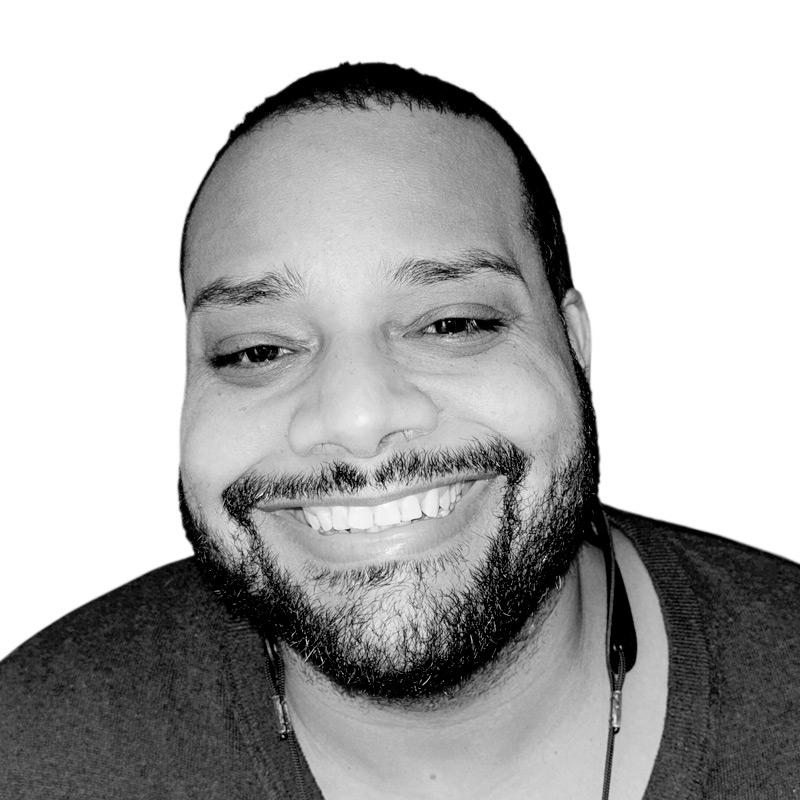
Studio Ghibli employs around 150 people, including its cofounder Hayao Miyazaki, the legendary animator who has drawn theatrical masterpieces for more than 40 years and counting. It’s a small studio with vast acclaim and a deep, masterful catalog. As of Wednesday, all of Studio Ghibli’s movies are available (with one glaring exception) for streaming on HBO Max, WarnerMedia’s new web video subscription service. Previously, Disney distributed the studio’s movies through physical releases and digital rentals in North America. Indeed, Disney helped popularize Studio Ghibli in the U.S. with the high-profile theatrical release of Spirited Away—which earned Miyazaki his first Oscar (for Best Animated Feature)—in 2001. Six months ago, Disney launched its own streaming service, Disney+, stocked with its original animation, but without Studio Ghibli—three years ago, Disney sold the distribution rights for the studio’s works, leaving HBO Max to buy the streaming rights and thus stake WarnerMedia’s claim to popular animation in the streaming wars.
The deal with HBO Max is a departure for Studio Ghibli: For years, it withheld its movies from digital distribution. “Studio Ghibli does not make their films available digitally, whether for download or streaming, anywhere in the world. They continue to believe that presentation is vital and particularly appreciate opportunities for audiences to experience the films together in a theatrical setting,” a company spokesperson told Polygon mere months ago.
Studio Ghibli means more than just Miyazaki and his most successful movies. His cofounders, including the late director Isao Takahata, leave a wild legacy for viewers to sort through. So, where to start? Here, I’ll recommend some movies, documentary footage, manga, and other light reading to launch you into the boundless blue sky. This is your syllabus for Studio Ghibli.
Nausicaä of the Valley of the Wind by Hayao Miyazaki (February 1982–March 1994)
Though the HBO Max library includes Miyazaki’s breakout film, Nausicaä of the Valley of the Wind, its theatrical release predates Studio Ghibli’s founding by a year. Sure, I’m recommending the movie (about a brave, high-flying princess, Nausicaä, who sweeps across a toxic, post-apocalyptic wasteland in an effort to reconcile humanity and nature). But even more so, I’m recommending its source material, Miyazaki’s manga series of the same name, which was published in Animage for 12 years, spanning seven volumes, translated into English and collected in a beautiful box set that I, personally, revisit more frequently than I revisit the film adaptation. The manga series preserves Miyazaki’s earlier, rougher art style and his combative phase in a nice, hefty memento.
Crucially, Nausicaä establishes Miyazaki’s obsession with aircraft, such as Nausicaä’s glider. Studio Ghibli was named after the Italian aircraft model Caproni Ca.309 Ghibli. If you cherish planes as much as Miyazaki does, you’ll want to watch Nausicaä, Porco Rosso, and The Wind Rises.
Grave of the Fireflies directed by Isao Takahata (1988)
The first couple of Studio Ghibli releases include Takahata’s theatrical debut, Grave of the Fireflies, which, unfortunately, HBO Max doesn’t include in its library. Takahata adapted Akiyuki Nosaka’s short story of the same name, and the publisher holds the distribution rights for Takahata’s movie. It’s an unfortunate omission. Depending on the day, I might regard Grave of the Fireflies as the studio’s greatest movie. (On other days, I’d argue for Porco Rosso, which HBO Max does include.) Granted, Grave of the Fireflies is the studio’s strangest masterpiece: a bleak, bewildering story about two young, orphaned siblings, Seita and Setsuko, who survive the U.S. air raids on Kobe only to suffer from starvation and exposure in the final months of World War II. It’s a profoundly disturbing movie. With utmost subtlety in its visual escalations, illustrating a young girl’s malnutrition, and simulating a teenage boy’s post-traumatic stress, Grave of the Fireflies shifts between simple poverty and surreal terror. It ranks among the most overwhelmingly sad movies that I’ve ever watched, and while you won’t find the movie on HBO Max, you can stream it on Hulu.
Starting Point, 1979-1996 by Hayao Miyazaki (1996)
In the past decade, Miyazaki’s western millennial audience has transformed him into a sardonic grandpa meme. In it, Miyazaki takes long drags from his cigarettes and laments the modern world while making an apocryphal pronouncement: “Anime was a mistake.”
Though he never uttered the epithet so frequently attributed to him, Miyazaki, the man, has echoed Miyazaki, the meme, in his own words. Miyazaki has written several essays and given several interviews throughout his career that he then compiled in two modest volumes: Starting Point and Turning Point. In particular, Starting Point contains so many cutting remarks and profound pronouncements about animation, cinema, manga, technology, history, politics, adolescence, and adulthood. The paperback cover for Starting Point features a doodle of Miyazaki sucking down cigarettes like a madman. Miyazaki was a blogger ahead of his time.
“On Your Mark” by Chage & Aska (1995)
Every couple years, nerd-news websites are obliged to remind readers that Miyazaki once directed a music video for the multiplatinum Japanese pop-rock duo, Chage & Aska (who recently split). The video is a departure from the conventional view of his work: It’s easy to watch his Studio Ghibli movies and come away with the sense that Miyazaki—enthralled with pure blue skies and untamed nature—resents modernity on several levels. The critical acclaim he’s received, and the Disney marketing for Studio Ghibli in the 1990s, made him out to be some distant, austere craftsman whose movies were, essentially, museum exhibits. But then you watch the “On Your Mark” music video and realize he’s a saucy, romantic weirdo who sets out, time and again, to reclaim humanity’s grass-stained whimsy in otherwise fraught, modern frontiers.
Whisper of the Heart directed by Yoshifumi Kondo (1995)
Studio Ghibli only sporadically promotes its other animators, such as Yoshifumi Kondo, into the director’s chair. But in 1995, Kondo caught his lucky break, directing his theatrical debut, Whisper of the Heart, the rare Ghibli rom-com. The bookish teen girl Shizuku and the adventurous teen boy Seiji stumble through a formative teen romance mediated, in a roundabout way, by a talking, imaginary cat named Baron. It’s an incredibly love-dumb movie that gets me every time, despite its preposterous ending, which always makes me want to hurl a remote for the love of better romantic judgment.
Hideaki Anno chats with Hayao Miyazaki (1997)
Honestly, I’m just spoiling for an excuse to promote the bizarre footage of a robe-clad Hideaki Anno meeting Miyazaki in the Sahara for logistically unclear reasons.
By the late 1990s, Miyazaki had become the world’s most prestigious anime director, a master craftsman whose preeminence haunts so many would-be successors (within Studio Ghibli as well as in the wider anime industry). The younger director Hideaki Anno worked on Nausicaä scenes at Studio Ghibli a decade before launching his own studios, Gainax and Khara, to produce Neon Genesis Evangelion and its (ongoing) theatrical spinoffs. Through the years, Miyazaki and Anno’s friendship has become a running comedy in public perception: the old, sardonic Miyazaki ribbing the young, shy Anno with beautifully backhanded encouragement in each strange phase of Anno’s own brilliant career. Notably, Miyazaki casts Anno to voice the protagonist, the aircraft engineer Jiro, in Miyazaki’s most recent movie, The Wind Rises.
Spirited Away directed by Hayao Miyazaki (2001)
In 2001, Spirited Away launched Studio Ghibli to its critical and commercial zenith. It won Miyazaki his first Oscar (on his first nomination) and brought Ghibli and Disney critical acclaim in the U.S. It’s the Ghibli movie that synthesizes Miyazaki’s many idiosyncrasies into an unwieldy story about a 10-year-old girl, Chihiro, who loses herself (and her foolish parents) in an abandoned amusement park filled with vivid, mischievous spirits. It’s Miyazaki’s biggest and most bonkers movie, teeming with heartfelt excellence in every character design, every background, every adventurous sequence, every flourish, every frame. Spirited Away spares no expense, and Studio Ghibli might have otherwise earned its worldwide acclaim and enduring goodwill on the strength of this movie alone.
The Kingdom of Dreams and Madness directed by Mami Sunada (2013)
This isn’t a Studio Ghibli movie. It’s a documentary about Studio Ghibli. Mami Sunada directed The Kingdom of Dreams and Madness during the production for Miyazaki’s most recent movie, The Wind Rises, and Takahata’s final movie, The Tale of the Princess Kaguya. A camera crew had unprecedented access to the studio’s headquarters in suburban Koganei, Tokyo, and Sunada trailed Miyazaki into his reluctant (and since postponed) retirement.
The Wind Rises and Princess Kaguya are both streaming on HBO Max, but you’ll have to find The Kingdom of Dreams and Madness elsewhere. Coupled with Starting Point, The Kingdom of Dreams and Madness presents Miyazaki as a sentimental contrarian whose movies shower viewers with affection as well as ideas about the natural world. But Sunada also works diligently to expand Studio Ghibli’s mystique to include its many other creators, such as the producer, Toshio Suzuki, who cofounded the studio with Miyazaki and Takahata and keeps the clockwork running to this day. Miyazaki may be the breadwinner for Studio Ghibli, but Sunada reveals a busy home. Never has a world-class movie studio seemed so impossibly small but nonetheless equipped to render new horizons from scratch.
Porco Rosso directed by Hayao Miyazaki (1992)
Honestly, I tried to conclude these recommendations with Miyazaki and Takahata’s most recent movies, both mentioned above. You should watch The Wind Rises; it’s great, and, crucially, it commemorates Miyazaki’s lifelong interests: airplanes and World War II. For the love of animation, you should watch Princess Kaguya; it’s also great, and, true to Takahata’s tendencies, it marks a peculiar deviation from Studio Ghibli’s house style.
But Porco Rosso is nuts. I could watch it a hundred times; I could talk about it for a hundred hours; and I really could belabor the case for Porco Rosso being the studio’s best movie. It’s Miyazaki’s most obviously autobiographical story about … a swaggy, anthropomorphic pig, Porco, who sips wine and battles sky pirates and Italian fascists while teaching his intrepid teen apprentice, Fio, how to build seaplanes on the Adriatic coast. From one generation to the next.

